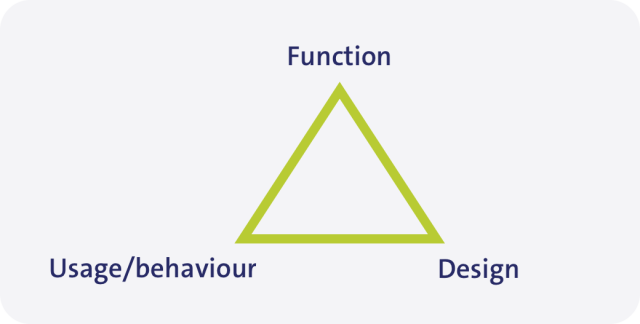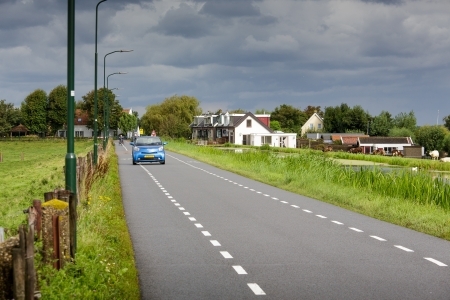The road design is in fact based on the triangle Function – Design – Usage/behaviour which is also used by designers outside the 'traffic' work field.

This triangle indicates that the function or purpose of the road should be reflected by the design (features and layout) and that the road design should evoke the intended and desired behaviour and road usage. When applied to traffic, this means that each of the three road types (through-roads, distributor roads, and access roads) requires a road design that results in the intended and desired use by road users. From the perspective of the road user, the design must make clear what the intended function/road category is and (thus) what the desired use and behaviour should be. We denote this with 'recognisability' and 'predictability'.
The concrete elaboration of design features is based on the Sustainable Safety concept and the Sustainable Safety principles of Functionality, (Bio)mechanics, and Psychologics (see SWOV fact sheet Sustainably safe road traffic).
